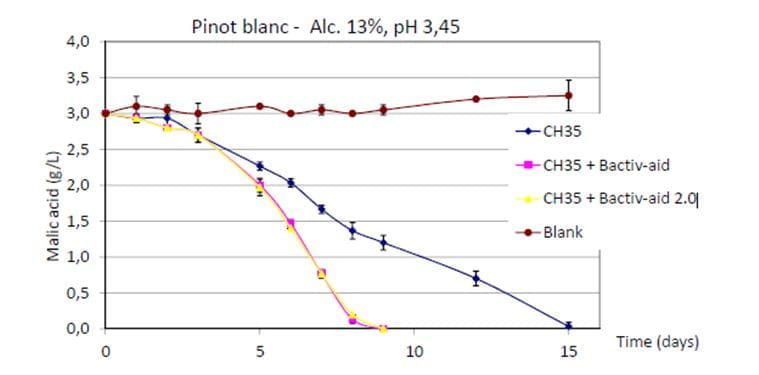Monitoring and managing Oenococcus oeni nutrition requires expertise
Our leadership in culture production and our expertise in monitoring and managing wine fermentation helped us define and design a well-balanced nutrient, ideal for oenological bacteria in difficult winemaking conditions: BACTIV-AID™.
Nitrogen for bacteria (from the species Oenococcus oeni): Our recommendations
If PAN < 25 mg/L, the wine is poor in assimilable nitrogen. Nutrients are needed. Never add mineral, ammonia, nitrogen. Bacteria cannot use this type of nitrogen source.
The BACTIV-AID™ 2.0 nutrient range will provide the necessary nutrients while detoxifying the wine from C8, C10, C12 medium-chain fatty acids released by yeasts during alcoholic fermentation and inhibiting bacterial growth.
BACTIV-AID™ 2.0 should be incorporated in the wine once alcoholic fermentation is achieved and before inoculation with VINIFLORA® bacteria. The dosage indicated on the BACTIV-AID™ 2.0 bags should be respected.
Effect of BACTIV-AID™ 2.0 nutrients on the malolactic fermentation rate in a white wine inoculated with the VINIFLORA® CH35 strain:




